

Rice farming in Sri Lanka
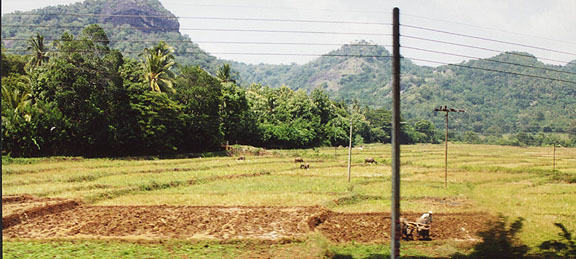
rice field in Sri Lanka
Of the 20 known species of rice, only two are cultivated—the widely grown Asian rice and the hardier African rice. Asian rice, if managed with modern techniques such as fertilizers, irrigation, and chemical pesticides, produces significantly more grain per plant than African rice, and for this reason is the preferred type in the majority of rice-growing countries.
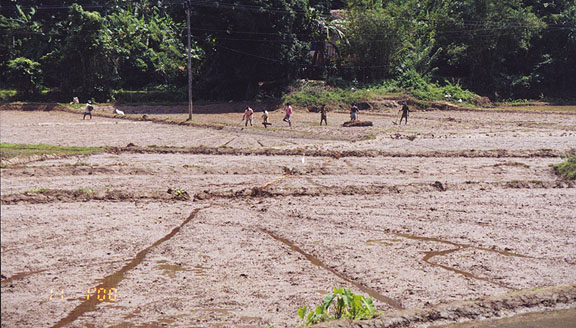
gathering chaff from a dry field after harvest
A kernel or grain of rice is a seed that contains an embryonic rice plant. The hull, a hard protective covering, surrounds the bran, which consists of layers of fibrous tissue that contain protein, vitamins, minerals, and oil. Beneath the bran is the endosperm, which makes up most of the rice grain. The endosperm contains starch, the energy source used by the germinating seed. The bran and endosperm are the edible portions of the grain.

burning the waste
A rice plant, a type of grass, has narrow, tapered leaves and grows from about 60 to 180 cm (about 2 to 6 ft) tall. Several flower stalks emerge from the plant, and in most varieties, a loose cluster of branching stems, called a panicle, radiates from the top of each stalk with small green flowers hanging from each stem. When the grain has developed, the panicle droops under the weight of the ripened kernels. Depending on the variety, one panicle provides about two handfuls of rice.
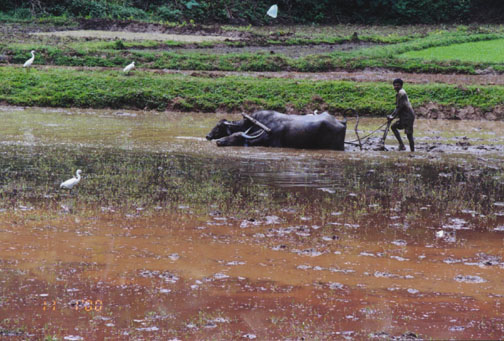

plowing with water buffalo

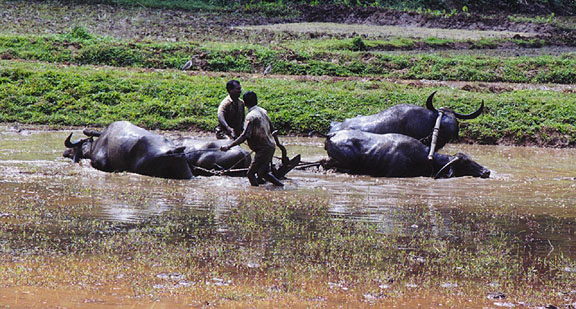
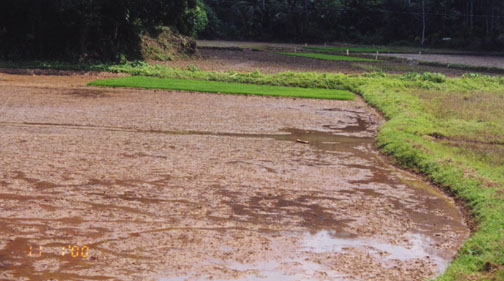
flooded field
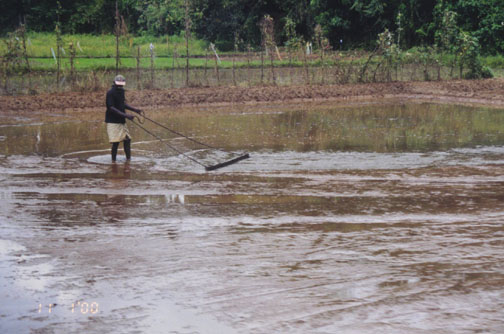
smoothing to prepare for rice planting
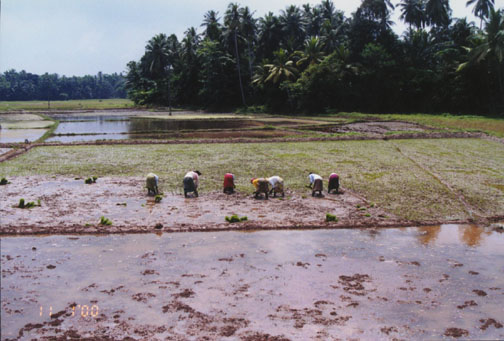
women planting rice stalks

![]()
Other Countries in the Indian Ocean
![]()